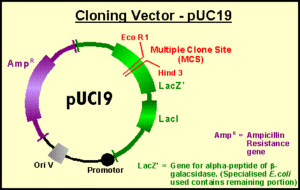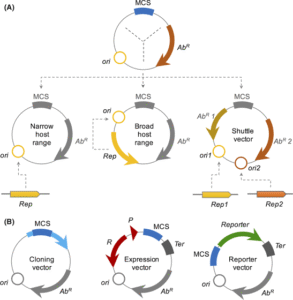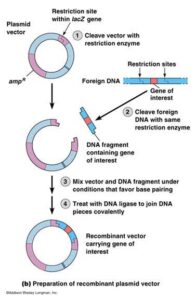Back to: MICROBIOLOGY 500 LEVEL
Welcome to class!
My focused future scientist, welcome back! You’ve been growing stronger in your microbiology journey, and I’m honestly impressed. Now, let’s talk about something that sounds like a sci-fi mission but is already happening in real labs across the world—even here in Nigeria! Today’s topic is about plasmids, vectors, and cloning hosts. By the end of this lesson, you’ll understand how scientists cleverly move genes around like USB drives, all in the name of medicine, agriculture, and technology.
Plasmids, Vectors, And Cloning Hosts
Have you ever transferred music or photos from one phone to another using a memory card or flash drive? You don’t send the whole phone, just the part you need. That’s exactly how plasmids and vectors work—they help scientists transfer useful genetic material into cells that can use it. And those recipient cells are called cloning hosts.

Plasmids
A plasmid is a small, circular piece of DNA found mostly in bacteria, separate from their main chromosome.
They’re like bonus DNA, not essential for survival, but very useful. For instance, some plasmids carry genes that help bacteria resist antibiotics.
Scientists have learned to use plasmids as tools. Why? Because they can:
Carry foreign genes
Copy themselves easily inside cells
Be passed on during cell division
So, plasmids act like the flash drives of molecular biology—they carry and deliver extra information.

Vectors
A vector is simply a vehicle used to deliver foreign DNA into a host cell.
Plasmids are the most common type of vector, but there are others too, like viruses and artificial chromosomes.
To work as a good cloning vector, a plasmid must have:
An origin of replication – so it can make copies of itself
A selectable marker – like an antibiotic resistance gene, so scientists can identify which cells received the plasmid
A multiple cloning site (MCS) – a region where foreign DNA can be inserted easily
Real-life Nigerian example: Think of it like a courier bike (vector) delivering Jollof rice (the gene) to your cousin’s house (the host). Without the bike, the food may not get there on time!
Cloning Hosts
These are the organisms that receive the vector and make many copies of the inserted gene.
E. coli, a common bacteria found in the human gut, is one of the most popular cloning hosts because:
It grows quickly
It’s easy to handle
It’s well understood in labs
Other cloning hosts include yeast, plants, and even mammalian cells, depending on what scientists want to achieve.

For example, insulin used by diabetic patients can be produced by inserting the insulin gene into E. coli using a plasmid vector.
Summary
- Plasmids are circular DNA found in bacteria and used to carry foreign genes.
- Vectors (often plasmids) are vehicles for transferring DNA into host cells.
- Cloning hosts like E. coli receive these vectors and help multiply the foreign genes for research or production.
Evaluation
- What is the role of a plasmid in genetic engineering?
- Mention two features of an ideal cloning vector.
- Why is E. coli commonly used as a cloning host?
You’ve done a fantastic job today! You now understand the tools that make modern genetic science possible. Whether it’s producing medicine, improving crops, or fighting diseases, these small DNA carriers and hosts are doing big things—and so are you. Stay curious and confident—Afrilearn is here to help you reach the very top. See you at the next exciting lesson, superstar!
